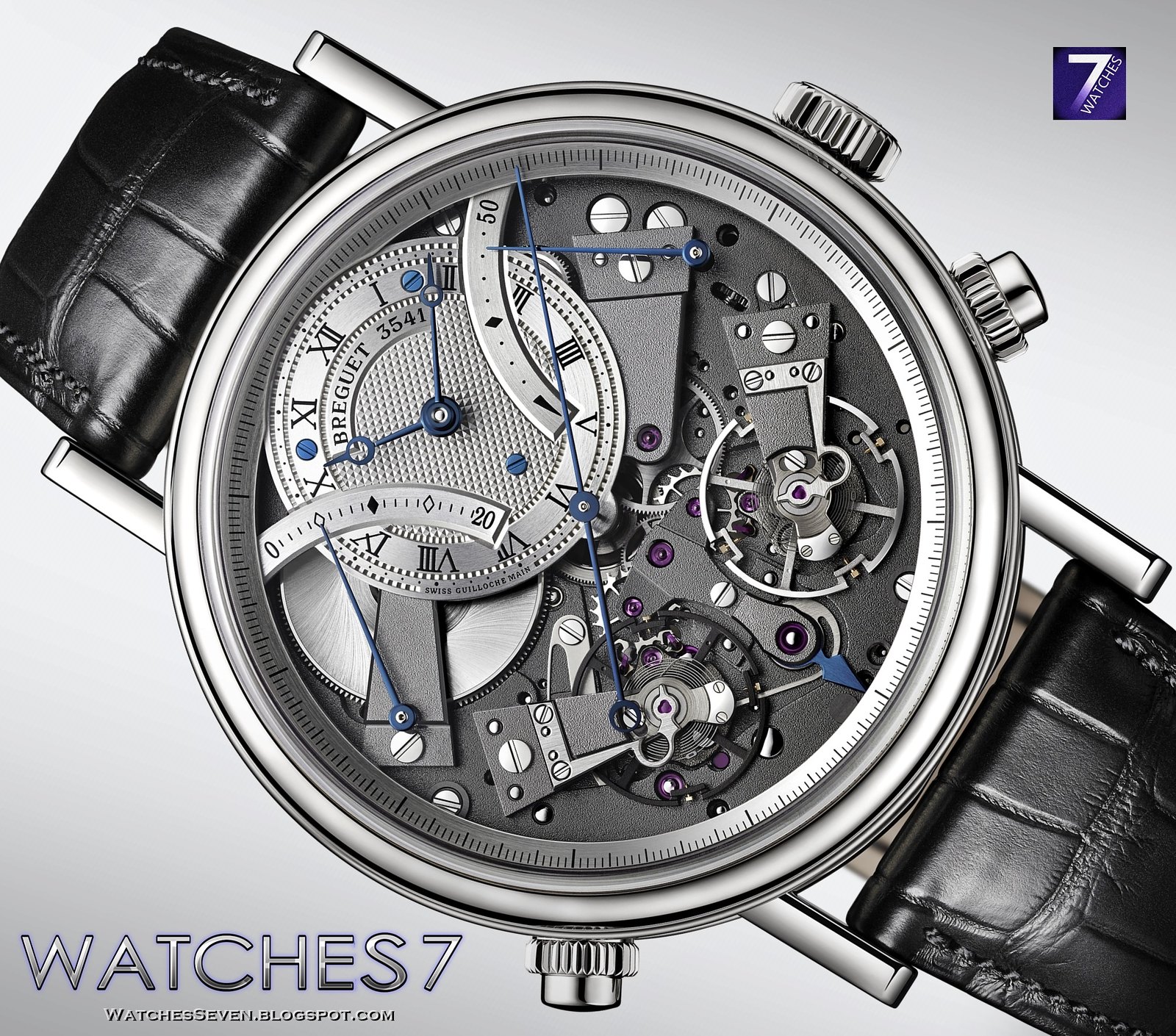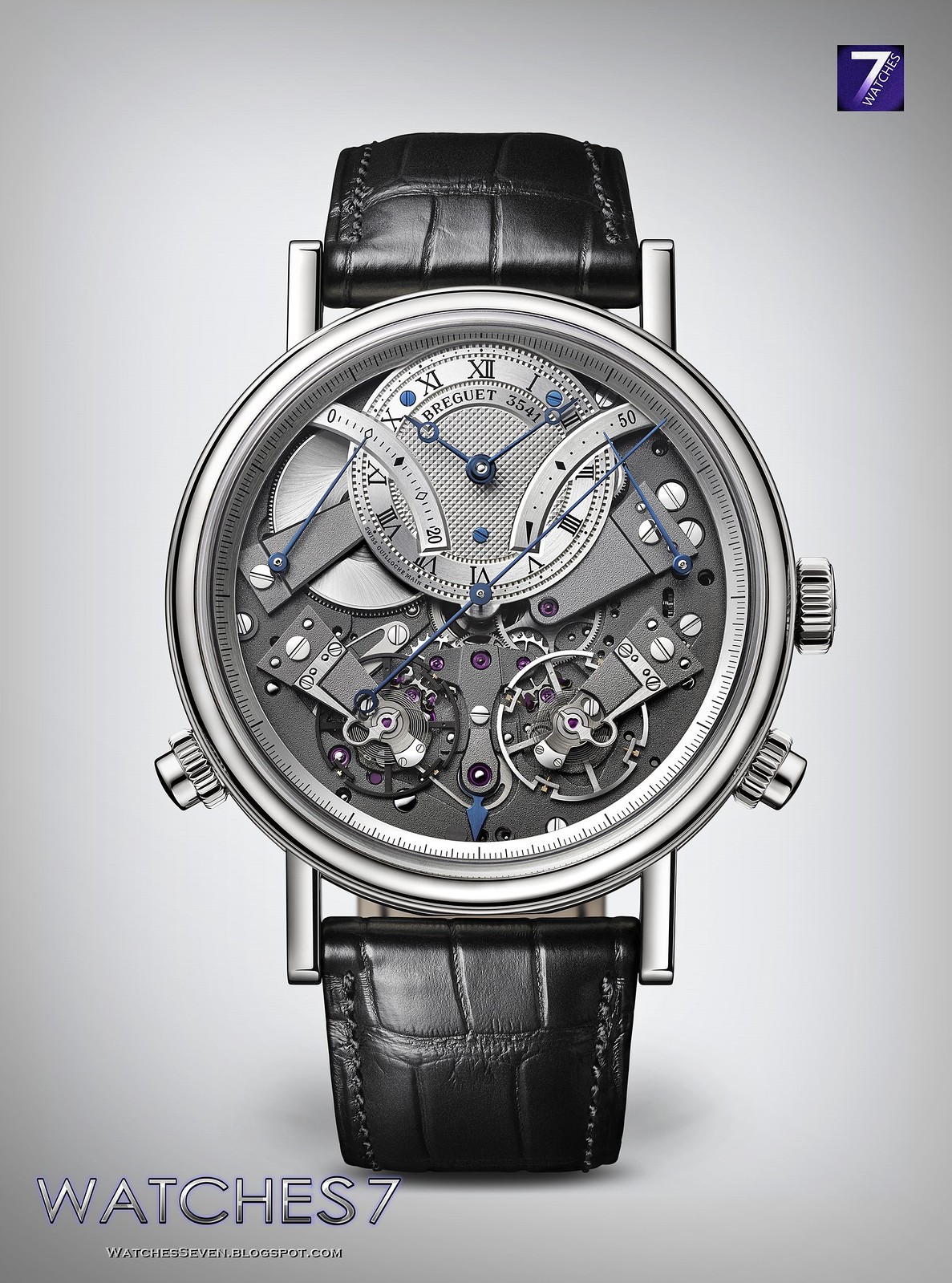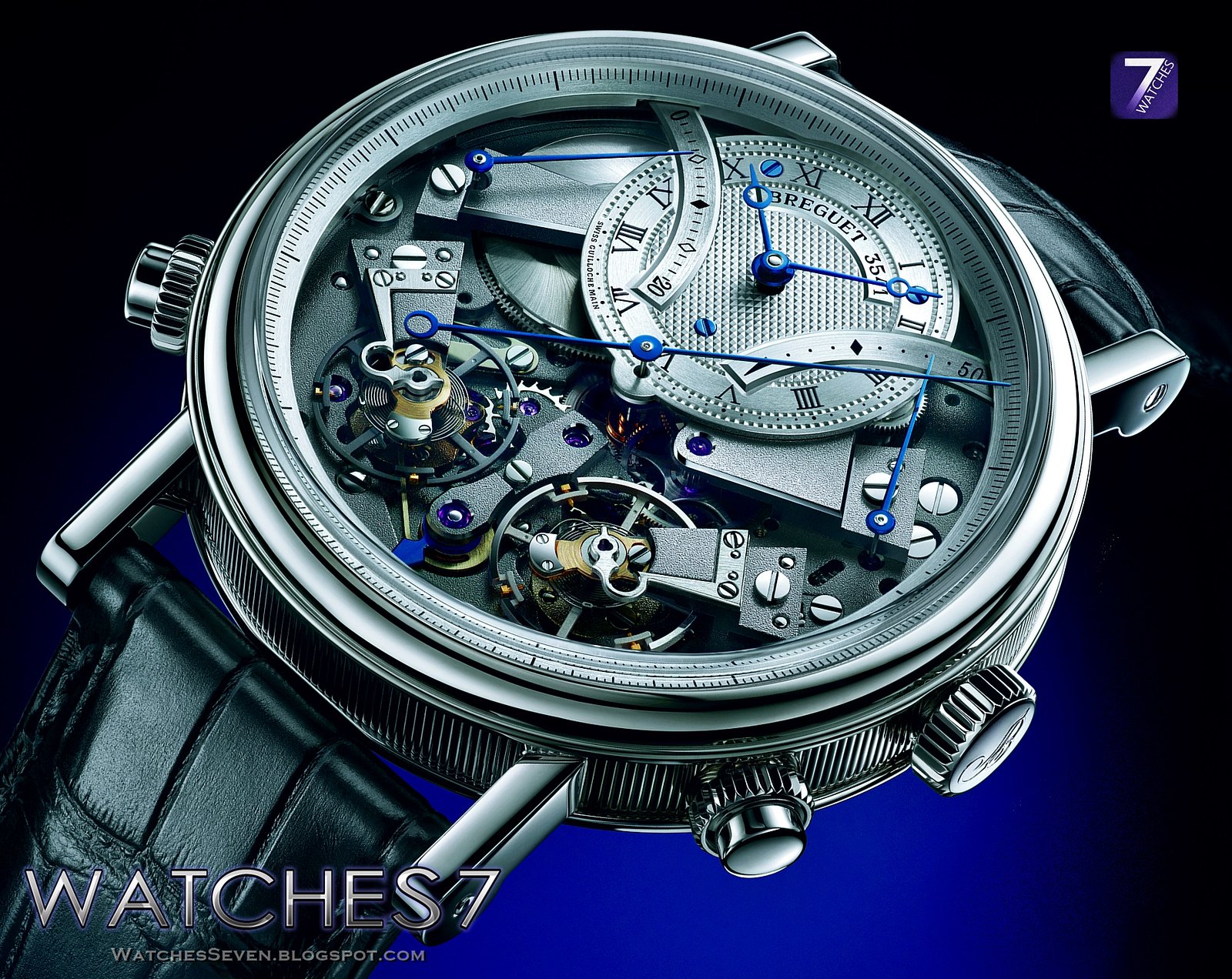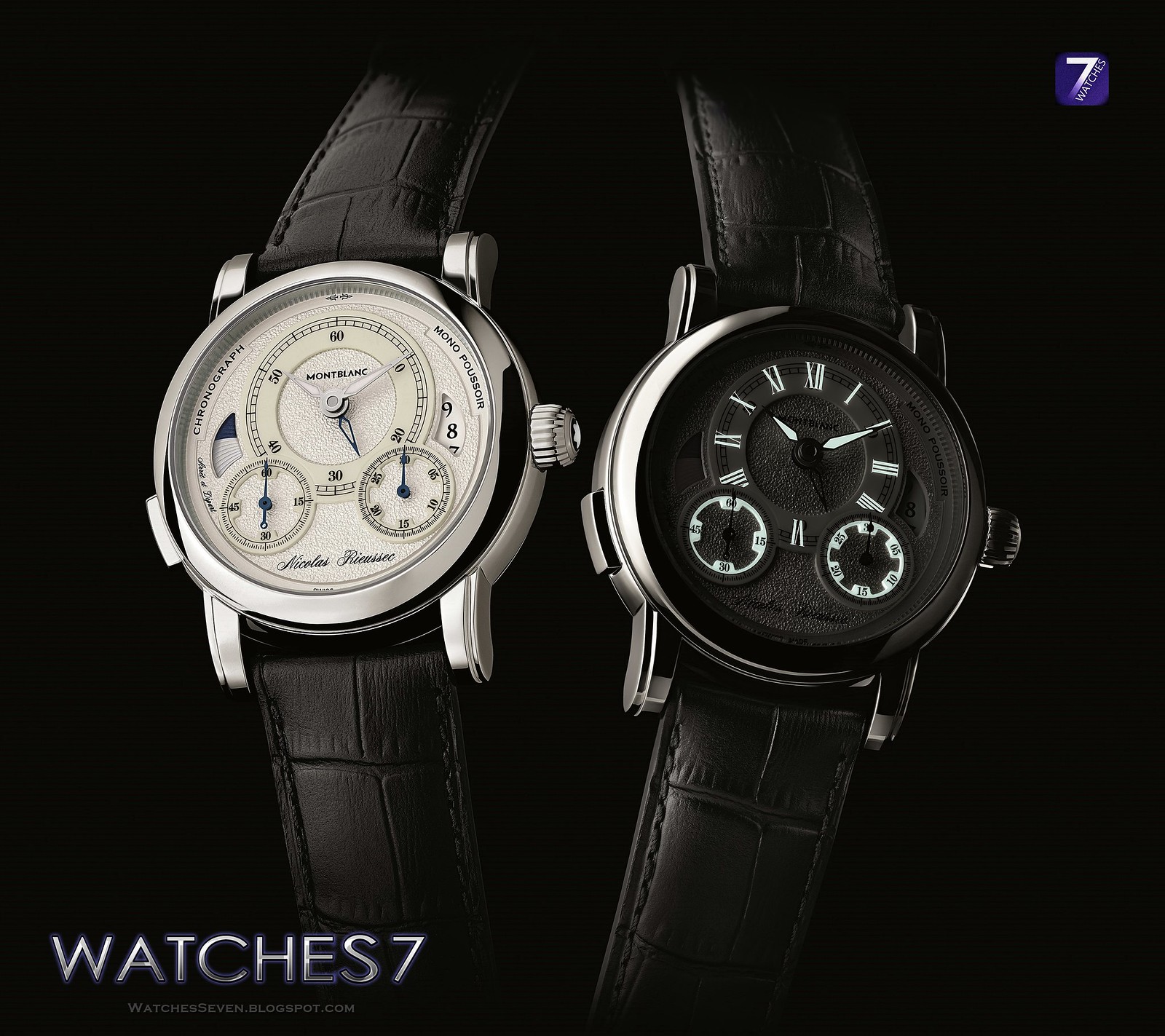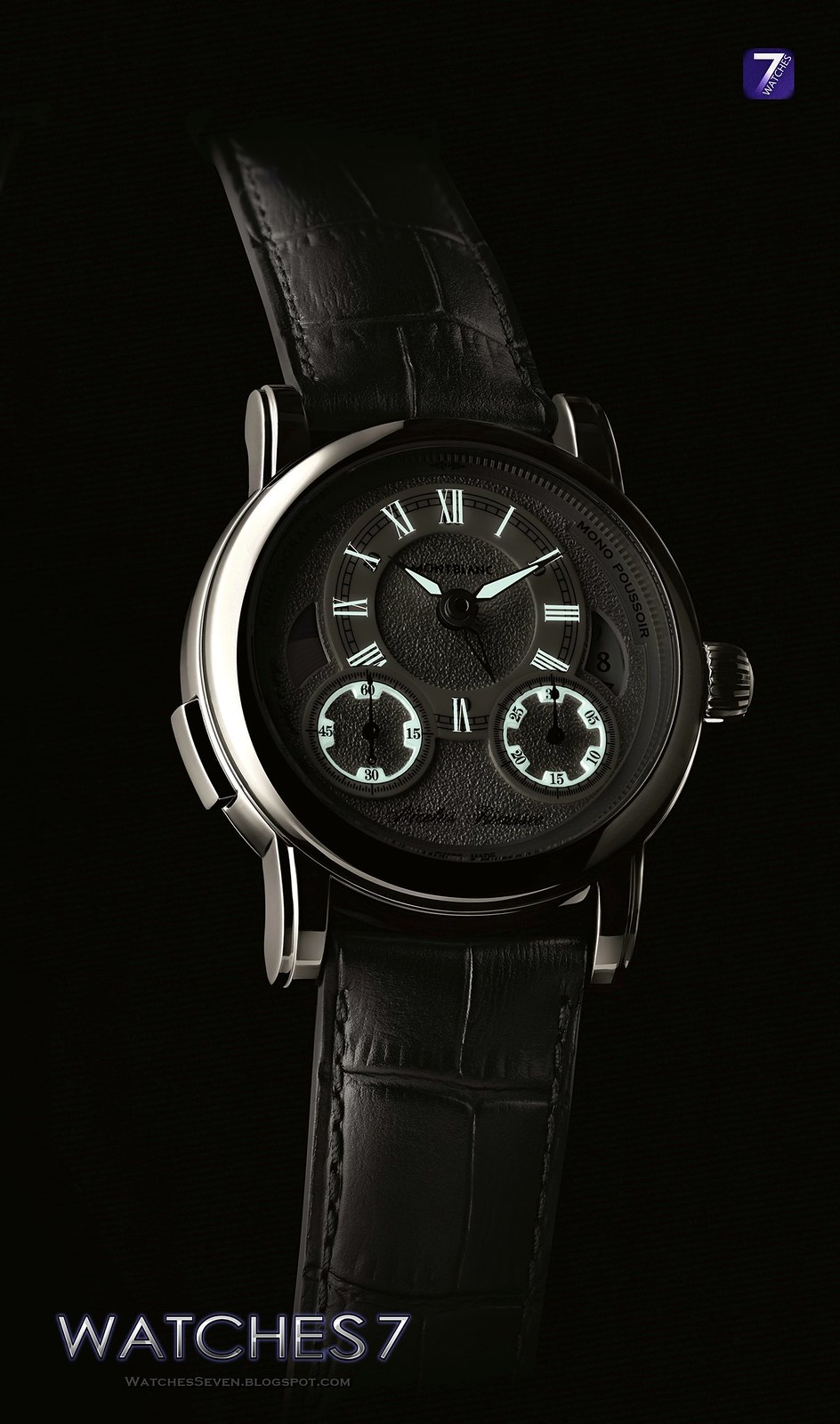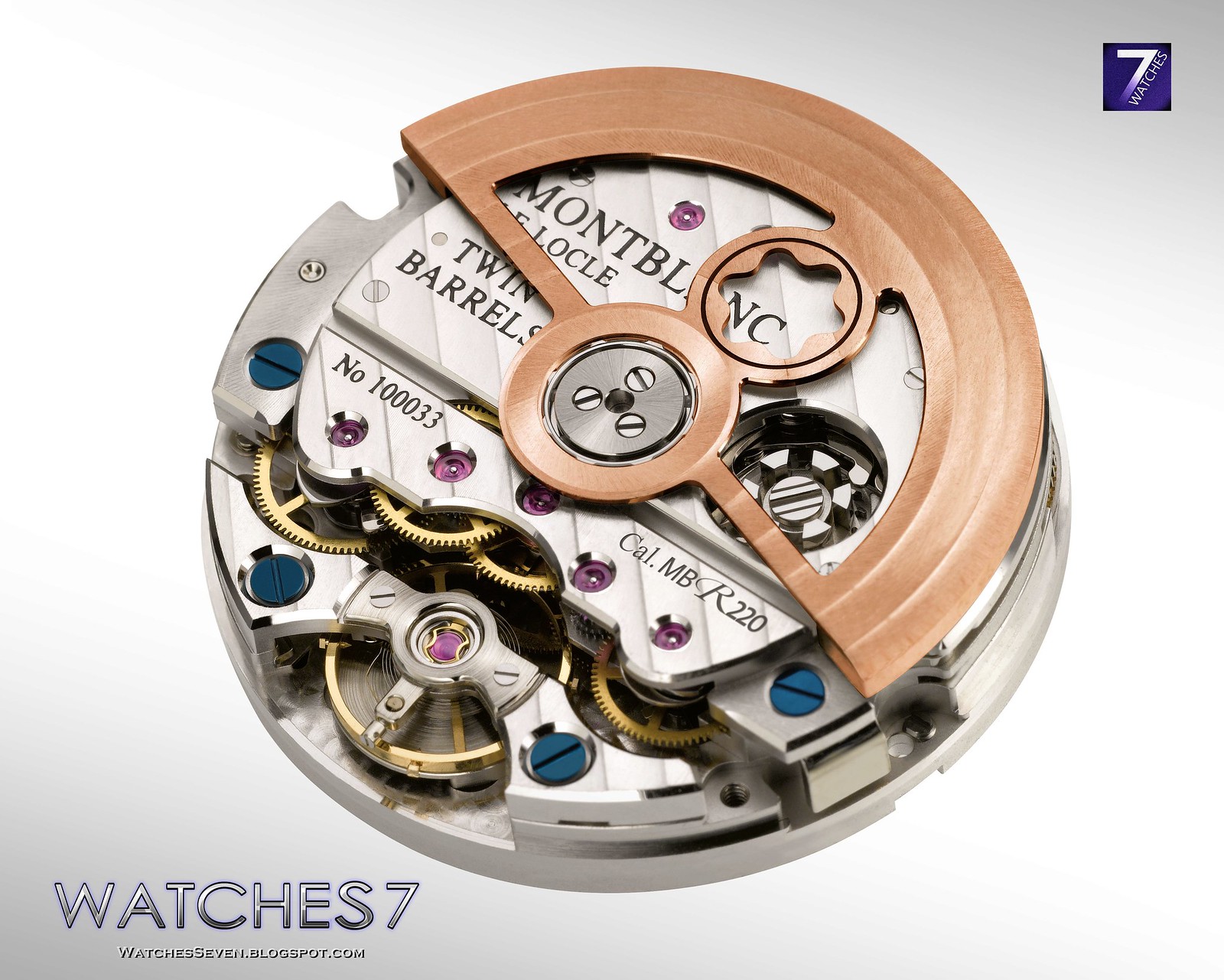
BREGUET – Tradition Chronographe Indépendant Reference 7077 White Gold
Click on the mouse wheel to see the large size ... FOTO
The chronograph occupies a choice position in watchmaking as a complication in its own right. Measuring elapsed times provides immediate visualisation of the desired function, but making it work is an additional mechanical challenge, because starting a chronograph disturbs the main gear trains.
Click on the mouse wheel to see the large size ... BIG FOTO
To alleviate this problem, Breguet has fitted its new Tradition Chronographe Indépendant 7077 model with two independent trains. The first is the going train for the hours and minutes, regulated by a 3Hz balance and having a power reserve of 50 hours.
Click on the mouse wheel to see the large size ... BIG FOTO
For the chronograph, the second transmission has a 5Hz frequency to ensure more precise readings, in harmony with the one devoted to measuring the passing of time. Breguet’s research into high frequencies shows that a higher rate of oscillations improves the stability of rate, since any disturbance is corrected more quickly. The two trains are entirely disconnected and the movement remains unaffected when the chronograph is started.
Click on the mouse wheel to see the large size ... BIG FOTO
Normally, a second train implies a second barrel to provide the energy required by the chronograph. This approach nonetheless needs more space and above all means that the owner of the watch must wind up the chronograph barrel spring as well as the going barrel. With the Tradition Chronographe Indépendant 7077 model, the company’s technicians have introduced a new type of spring perfectly suited to the chronograph function.
Click on the mouse wheel to see the large size ... BIG FOTO
The energy required to drive the chronograph is provided by the user when operating the reset-to-zero function. This energy is stored in a flexed blade spring. The power reserve of this historical type of spring amounts to no more than 20 minutes, but this is ideal for measuring short elapsed times.
Click on the mouse wheel to see the large size ... BIG FOTO
The system enables the user to start the chronograph instantly, without worrying about the energy available, because it will always be at its maximum. To ensure that the spring is fully flexed, Breguet has designed a shape that guarantees enough elasticity to provide extra energy when arming the spring.
Click on the mouse wheel to see the large size ... BIG FOTO
The application of the blade spring principle by Breguet’s watchmakers has given rise to a number of innovations. A non-concentric going train has been associated with the blade spring so as to even out the torque and achieve constant amplitude and rate of the chronograph. A patent has been filed for the entire spring and train assembly. Instead of following its usual curve, the shape of the train has been calculated to transmit constant force to the chronograph.
Click on the mouse wheel to see the large size ... BIG FOTO
In addition, the reference 7077 is fitted with a patented chronograph balance-wheel in titanium ensuring perfect symmetry with the movement balance-wheel. The use of a heavier material for the balance-wheel would have meant making it smaller. The overall appearance would be affected, especially since one of the features of the Tradition collection is to make the main parts of the movement visible on the baseplate. The two balance-wheels are thus the same size, despite their different frequencies, and their position is in tune with aesthetic considerations.
Click on the mouse wheel to see the large size ... BIG FOTO
The chronograph function of this Tradition model is controlled by two pushers that are screwed in to keep out water. Contrary to customary chronographs, one pusher is devoted to starting the measurement, while the other stops and resets the chronograph to zero.
Click on the mouse wheel to see the large size ... BIG FOTO
It is this zeroing action that flexes and arms the blade spring, thus preparing the chronograph for a new measurement. The titanium balance-wheel is also flanked by two brakes.
Click on the mouse wheel to see the large size ... BIG FOTO
The first, working off a cam, frees the balance wheel when the chronograph is started and then holds it when the chronograph is stopped. In this way the balance-wheel is always in the ideal position and instantly reaches its proper amplitude. This innovative mechanism is protected by patent.
Click on the mouse wheel to see the large size ... BIG FOTO
Among the features that recall the historical roots of the Tradition collection are the patented pare-chute anti-shock devices as well as the chronograph control which recalls that of the reference 4009 double second observation timer sold by Breguet on January 6th 1825.
Click on the mouse wheel to see the large size ... BIG FOTO
In keeping with the rules, the style of this Breguet Tradition Chronographe Indépendant 7077 is noted for its symmetry. The engine turned dial in silvered gold showing the hours and minutes are offset at 12 o'clock, while the chronograph hand is fixed in the centre of the watch.
Click on the mouse wheel to see the large size ... BIG FOTO
The chronograph-activation indicator is at 6 o'clock. Directly opposite each other at 2 o'clock and 10 o'clock two retrograde hands respectively indicate the power reserve of the watch and the chronograph minutes, while the two balance-wheels beat side by side at 4 o'clock and 8 o'clock.
Click on the mouse wheel to see the large size ... BIG FOTO
This hand-wound timepiece is water-resistant to 3 bar (30m) and is fitted with a leather strap.
---------------------------------------------------------------
TECHINCAL SPECIFICATIONS
Model: Tradition Chronographe Indépendant 7077
Reference: 7077BB/G1/9XV
Case
18-carat white gold with delicately fluted case band
Sapphire-crystal caseback
height (mm) 44
thickness (mm) 13.95
Welded lugs with screw bars
Water resistant to 3 bar (30m)
Dial
Silvered 18-carat gold, engine-turned and offset at 12 o'clock
Individually numbered and signed Breguet
Hours chapter with Roman numerals
Power reserve indicator at 2 o'clock and 20-minute counter at 10 o'clock
Breguet open tipped hands in blued steel
Movement
Hand-wound chronograph movement numbered and signed Breguet
Power reserve indicator and 20-minute counter engraved on the back of the movement
Chronograph running indicator at 6 o'clock
Cal. 580DR.
16
62
Power reserve (hours) 50
Symmetrical inverted in-line lever escapements with silicon pallets
Breguet balance-wheels on Breguet springs in silicon
Movement frequency: 3Hz
Chronograph frequency: 5Hz
The two oscillators are adjusted in six positions
Strap
Black Leather strap 9XV
Versions
Also available in 18-carat rose gold
Reference 7077BR/G1/9XV
-------------------------------
www.facebook.com - Montres Breguet
-------------------------------------------------
www.Breguet.com












